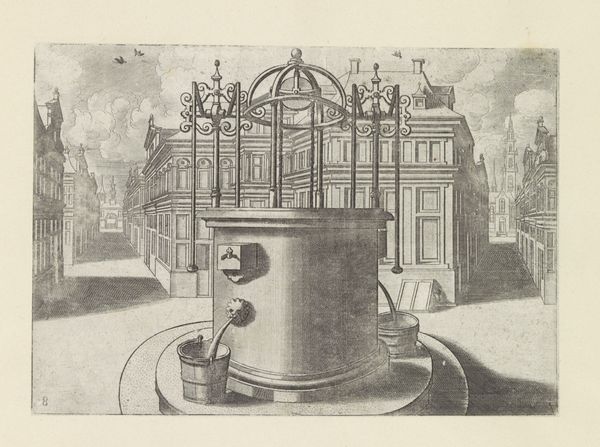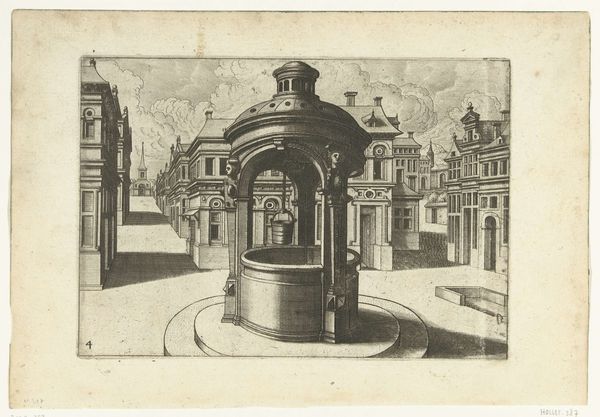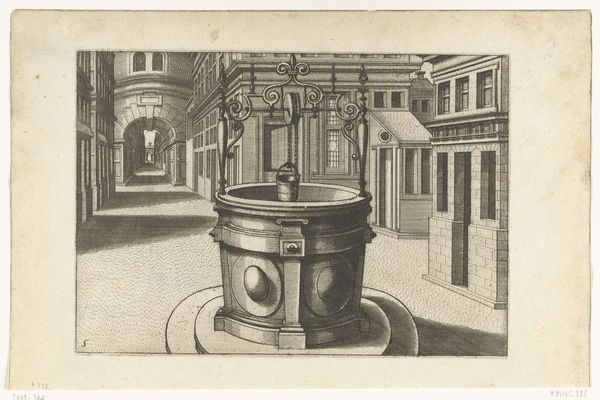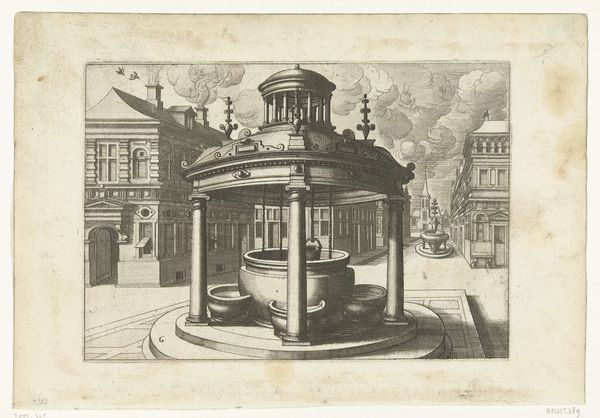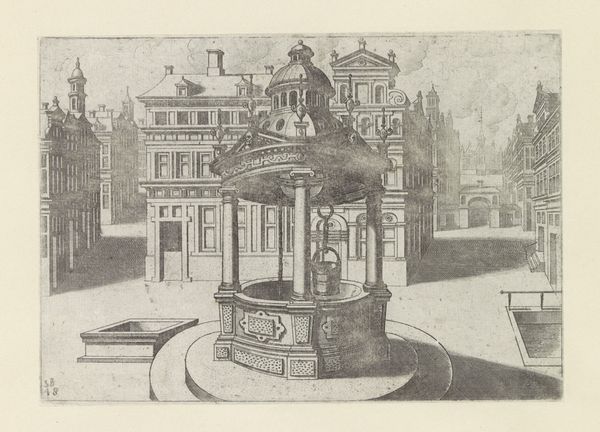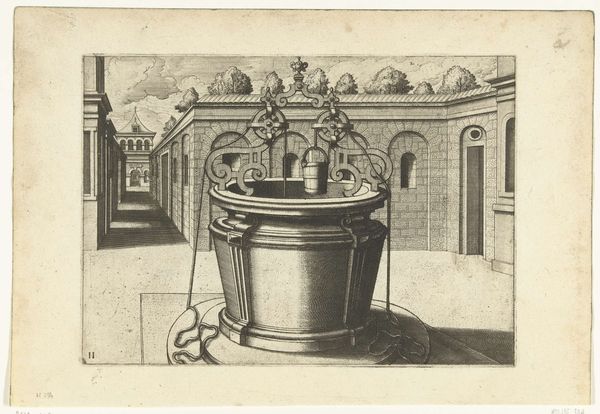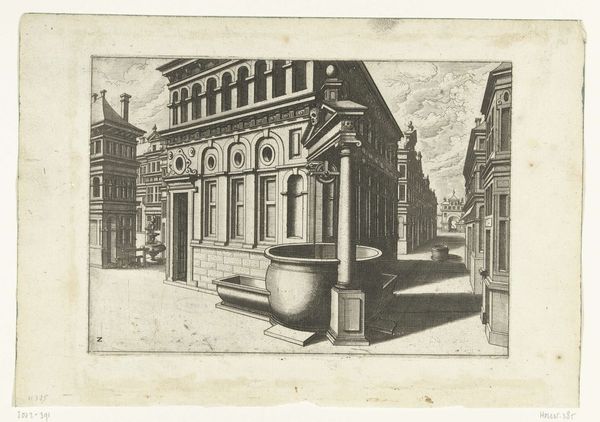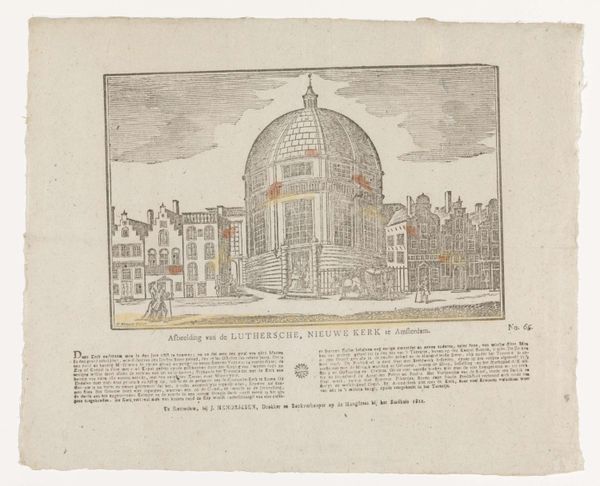
Hoge ronde waterput met ijzeren ornamentale overhuiving en twee pompzwengels c. 1574
0:00
0:00
johannesoflucasvandoetechum
Rijksmuseum
#
aged paper
#
toned paper
#
old engraving style
#
personal sketchbook
#
pen-ink sketch
#
pen and pencil
#
sketchbook drawing
#
watercolour illustration
#
cartoon carciture
#
pencil art
Dimensions: height 143 mm, width 201 mm
Copyright: Rijks Museum: Open Domain
Curator: What immediately strikes me is the quiet stillness—a frozen moment in what feels like a very ordered, miniature city. The light and shadows give it this wonderfully melancholy air. Editor: It’s certainly a fascinating print. We’re looking at "Hoge ronde waterput met ijzeren ornamentale overhuiving en twee pompzwengels," which translates to "Tall round well with iron ornamental hood and two pump cranks," created around 1574 by Johannes or Lucas van Doetechum. Curator: A mouthful, that title! But accurate, I suppose. I keep coming back to how solid the well appears, juxtaposed against the delicacy of the etched lines everywhere else. Editor: Indeed. The production here reveals a keen understanding of materials and labor. Look at how the weight of the well contrasts with the almost lace-like quality of the ironwork. This suggests a complex relationship between necessity—water access—and civic pride displayed through ornate ironworking, which undoubtedly required skilled craftspeople. The print served as a visual record and a form of social documentation. Curator: I see it also as an architectural fantasy, the symmetry almost unsettling in its perfection. There’s a sort of…preoccupation with cleanliness and order. What’s most compelling for me, though, is that the water’s actually pouring, as captured in this very moment of flow—a sense of temporality, amidst all that meticulousness. Editor: Right. The distribution of water, the act of communal drawing…Water wasn’t merely a commodity, but a key component of public life and its distribution a concern for governance. The location, too, tells us this image speaks directly to how people interact within public squares, negotiating space and resources in an emergent urban environment. Curator: That makes me wonder who gathered there, near this grand structure. The etching implies an aspiration toward ideal community living, though, the figures absent make it quite uncanny. A longing perhaps more than representation. Editor: I agree that absence speaks volumes. By detailing these specific elements, from ironwork down to bucket size, the artist highlights the increasing complexity and material culture of urban life. Curator: Looking at this scene with all its layers, I find myself pondering: water—a fundamental need meets decorative metal. Art mirroring the social systems needed to meet our most vital material requirements. Editor: A final thought for me would be on how a seemingly mundane object has, through meticulous and skilled depiction, evolved into a lasting and captivating comment on society.
Comments
No comments
Be the first to comment and join the conversation on the ultimate creative platform.
